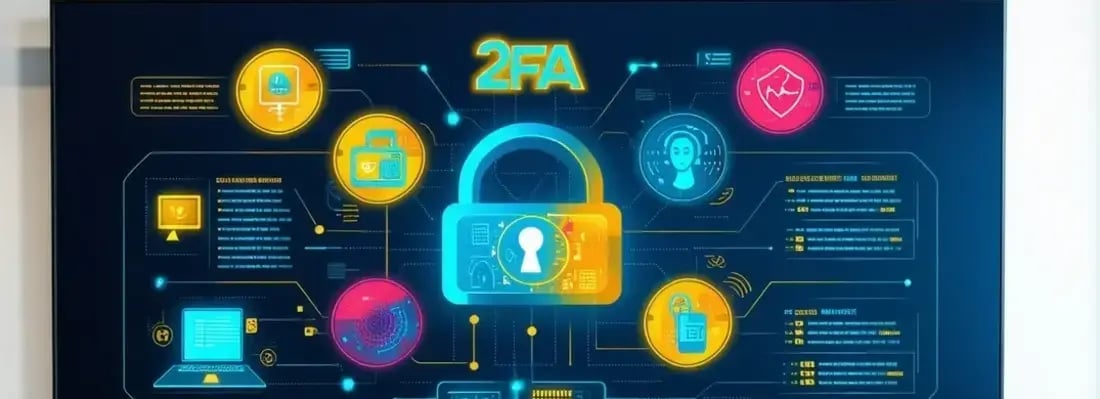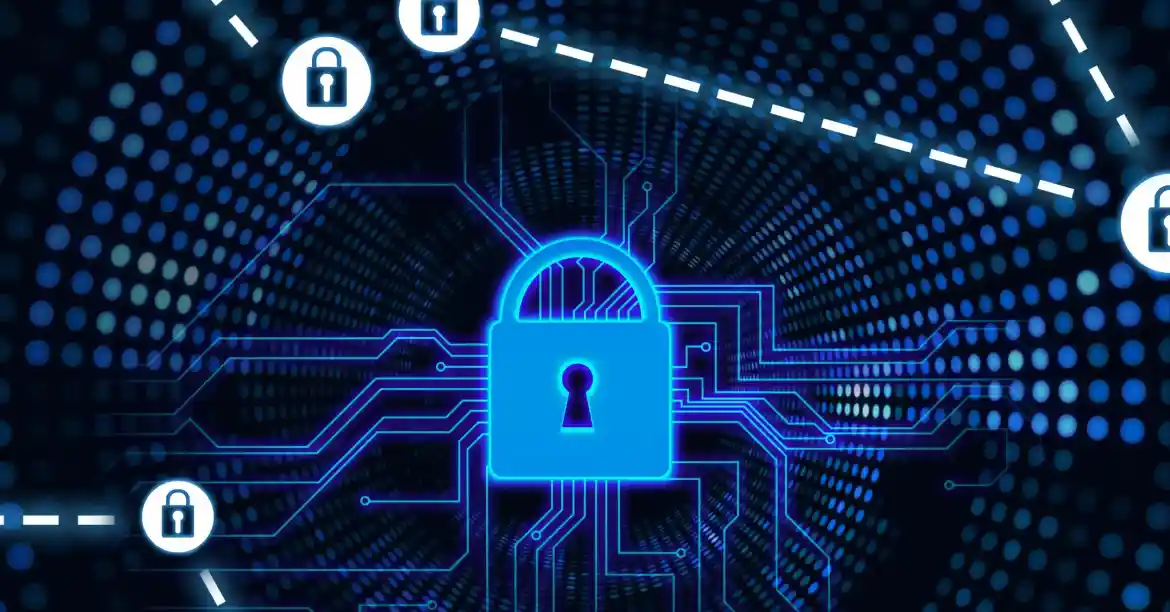Prevent Cyber Attacks with Two-Factor Authentication Providers
Date: 29 March 2025

Cybercriminals are always looking for ways to break into business systems, steal data, and cause financial losses. Weak passwords make their job easier. This is why companies rely on a two factor authentication provider to strengthen security.
With 2FA, even if an attacker gets a password, they can’t log in without a second verification step. But how does this extra layer of protection work, and what are its best forms? Let’s explore how 2FA blocks threats and the different types available for businesses.
The Role of Two-Factor Authentication in Thwarting Unauthorised Access
Password-only is the biggest security risk that any system could employ. Almost 81% cases of data breaches are a result of weak or stolen passwords. Phishing, credential replay, and keylogging are the common techniques attackers follow to commit the login details. When they gain entry, they are free to navigate through the business system, pilfer information, or hold files for ransom.
This is helped by the fact that a two-factor authentication provider comes in and makes the process of logging in two steps. In the worst case, even if one obtains the password of a user, he or she must provide another answer, such as:
- A code that is provided once and is created for one mobile device
- A push notification requiring user approval
- A fingerprint or facial scan
- A physical security key
This extra measure helps to make unauthorised access highly improbable. For instance, if an employee has been lured to offer the password to a site by an attacker through phishing, it will be difficult for the attacker to proceed with the access without the other factor.
Most social platforms such as Google, Microsoft, and apps of financial institutions now depend on two-factor authentication. 2FA improves the security of business by minimising account takeover that may compromise emails, cloud apps, and in-house databases.
Different Types of Two-Factor Authentication and Their Strengths
Not all types of 2FA are secured at the same degree. Some are easier to handle and use than others, while others are more secure. The following are the common forms of 2FA:
- One-Time Passwords (OTP) via SMS and Email
The essence of its functioning is as follows: the user is sent a temporary code by text message or to email and, after entering the code – logs into the site or the application. The first strength is that it is easy to use and does not need additional applications or support. Flaws include the possibility of being intercepted through SIM-swapping attacks as well as Emails.
- Authenticator Apps and Push Notifications
Google Authenticator, Microsoft Authenticator, and Authy work on the concept of generating time-sensitive codes or sending a push notification to the user. Their strength is being safer than the average SMS since it does not involve mobile service providers. The challenge is that there is a need for the person using it to install and download an application.
- Hardware Security Keys
This is a physical and portable device, such as, YubiKey which needs to be plugged in or scanned to confirm the log in details. The advantage is it’s much safer than most other options since a physical key cannot be phished. The weakness is that it can be lost or misplaced, so one needs to have other means of accessing one's account.
- Biometric Authentication
Users are required to scan their fingerprints, record their faces or speak to the device in order to get access. This type of 2FA is easy to implement, and since biometrics are identities inconsistent with each individual, they are secure. The flaw here is that Biometric Authentication can possibly be influenced by conditions in the device or hands, such as dampness.
There is, therefore, always a trade-off between security, convenience, and cost in each of these methods. Any business selecting a two factor authentication provider should make sure that several options exist so that individuals in the business environment get both discreet and easily operable solutions.
Hardware Security Keys and Biometric Authentication
As might be clear from the above discussion, we have the following options of providing heightened security to businesses that are at high risk of cyber threats. These ones are more advanced than one-time passwords; it is very difficult for the attackers to enter a secure platform.
Hardware Security Keys: Physical Protection Against Online Threats
YubiKey or Google Titan is a hardware security key or a small USB/NFC device that needs to be plugged or tapped to the device owner’s machine for login authentication. It also means that these keys are immune to phishing compared to what is obtained with the use of SMS or authenticator apps. If an attacker manages to get your password, he cannot log into your account without the physical key.
This is mainly because many organisations that adopt MFA on their local networks use hardware security keys, which are offline and thus suitable for protecting internal connections. However, newer modes have to be devised in case the keys are lost or damaged.
Biometric Authentication: Using the Human Body as a Security Layer
Biometric identification is a technology whereby an individual is positively recognized based on some physical characteristics, such as fingerprints or a face map. It is used in most of the recent technology gadgets, including smartphones and laptops. Biometrics cannot be stolen, like passwords, making it a good form of security.
However, some difficulties are associated with this method. Accepted biometrics may also be deceiving, for example, high-resolution images or deepfake technology can be used to manipulate the system. Also, login failure can be attributed to dirty fingers or inadequate lighting. Therefore, in the process of increasing security, biometric data should be used in conjunction with at least one more factors of authentication which always preserves the balance and makes access safe in businesses.
How 2FA Providers Help Businesses Reduce Cyber Risks
Cyber criminals never stop innovating with schemes and techniques, but 2FA solutions help businesses to not get caught unprepared. Effective prevention of unauthorised access is one of the ways in which multiple verification steps lower the risk posed by malicious threat actors.
Blocking Unauthorised Logins and Account Takeovers
Account takeover is one of the biggest risks that businesses have to contend with. This can happen through phishing, brute-force attacks, or when attackers get hold of the login credentials through other means, such as hacking. They could then get access to the company’s and its clients' financial records or install viruses like ransomware.
2FA providers prevent these threats because even when a password is stolen, it cannot be used by the attacker. Thus, even if an identity thief obtains the right user credentials, the attacker cannot assume access until it yields a second factor, such as a code, a security key, or biometrics.
However, for the companies adopting MFA on-premise, this security layer is even stronger because the authentication is performed within the company’s sphere, not exposing the company to the threats that target the cloud services for the authentication.
Protecting Employees from Phishing Attacks
Phishing is a type of attack in which a fake email is sent to individuals with the aim of prompting users to provide login information and obtaining their passwords. Making errors is not tolerable because they can affect an entire company's network.
2FA acts as a safety net. For example, if an employee enters their password on the wrong pretender website, the attacker cannot log in without the second factor of authentication. Some sophisticated 2FA providers even become aware of suspicious login attempts and can inform the user in advance.
Ensuring Compliance with Industry Security Standards
Regulatory bodies require businesses to follow strict security rules. Many industries, including finance, healthcare, and e-commerce, must implement multi-factor authentication to comply with regulations like :
The GDPR (General Data Protection Regulation) – Protects personal data in the EU
HIPAA (Health Insurance Portability and Accountability Act) – Secures patient information in healthcare
PCI DSS (Payment Card Industry Data Security Standard) – Ensures credit card data security
Failure to comply with these regulations can result in heavy fines, lawsuits, or loss of customer trust. A reliable 2FA provider helps businesses meet these security requirements while keeping their systems easy to use.
For companies that manage highly sensitive data, mfa on premise solutions provide an added advantage by keeping authentication processes under direct company control. This approach reduces reliance on third-party cloud services, ensuring data sovereignty and compliance with strict internal security policies.
By integrating strong authentication methods, businesses not only protect sensitive data but also build trust with customers and partners. Cyber threats aren’t going away, but with the right security measures, companies can prevent costly breaches and keep their operations running smoothly.
Strengthening Business Security with the Right 2FA Provider
In the world today, companies and organisations are facing increased risk of cyber threats, yet it is not impossible for them to be vulnerable. A trusted two-factor authentication provider can help in preventing unauthorised access, cessation of phishing attacks, and adherence to security standards.
The choice of authentication method matters. Hardware security keys and biometric verification provide enhanced security of the identity, and use of MFA on-premise solutions provide full control over authentication data to businesses. Overall, 2FA services make a significant difference for employees, customers, or within the organisation as they minimise cyber threats and possible loss of capital.
Despite this, when implemented, no single factor of security can entirely prevent security threats, but with multi-factor authentication, it becomes much more challenging for cyber criminals to gain access. This means that those organisations that choose the right 2FA vendor not only obtain protection but also increase customer trust and compliance. Hackers are always on the lookout for an opportunity to penetrate your network — do not let a poorly implemented authentication method be the way they get in.







